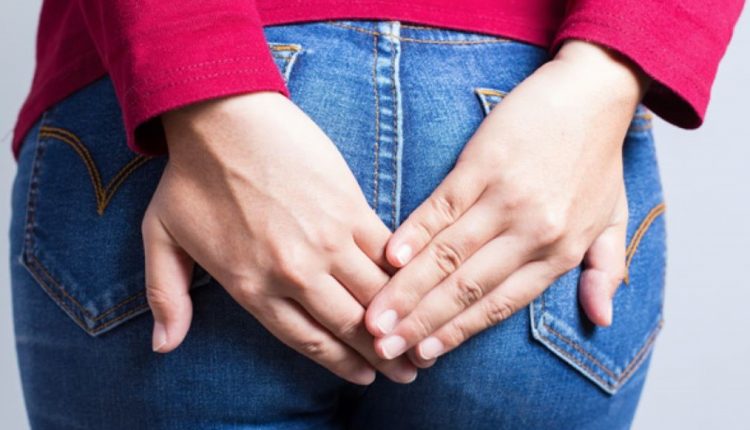
Haemorrhoids: causes, symptoms and treatment
Let’s talk about haemorrhoids: haemorrhoid disease is caused by the outward protrusion of part of the inner lining of the anal canal. How can it be treated?
Haemorrhoids are angiocavernous anatomical structures located in the anal canal.
They resemble pads and are already present in the foetus and perform the function of completing the continence of liquids and gases.
The function of completing continence is fulfilled through blood inflow and outflow: haemorrhoids swell, closing the lumen of the anal canal, by arterial inflow and deflate, reopening the lumen of the anal canal, by venous outflow.
Haemorrhoids are divided into:
- internal plexuses – located above the pectinate line and covered with insensible rectal mucosa;
- external plexuses – located below the pectinate line and covered with very sensitive anoderm.
There are three haemorrhoids in each plexus and they are located at ‘three-seven-eleven o’clock’.
Haemorrhoids: what are the causes
Haemorrhoid pathology is caused by an outward protrusion of part of the lining of the anal canal (mucous prolapse): the rectal mucosa slides downwards, pushing out the internal haemorrhoids, which in turn push out the external haemorrhoids.
There are several conditions that predispose to the condition, or are associated with it.
The most common are:
- hereditary factors
- constipation
- increased intra-abdominal pressure
- exhausting work and excessive exertion
- psychological stress
- irregular diet.
Symptoms and signs of haemorrhoids
Prolapse: represents the leakage through the anus of the inner mucous membrane of the anal and rectal canal, can be of varying degrees and may be associated with an involuntary loss of fluid and gas.
Blood loss during defecation: blood is typically bright red.
The bleeding may sometimes be mild and soil the toilet paper or be present on the stool; other times it is present as the loss of blood drops during and/or after the expulsion of stools.
In these cases, bleeding may be the cause of anaemia.
Pain: related to external haemorrhoids and the occurrence of haematomas or haemorrhoidal thrombosis.
Itching and burning of the anal area: the continuous loss of rectal secretion due to prolapse makes the anus moist and can be a cause of itching and irritation.
Presence of a particularly sensitive external swelling.
Classification of haemorrhoids
Haemorrhoids are classified according to the degree of mucous prolapse.
We distinguish:
grade 1: internal mucous prolapse, which does not extend beyond the anal margin during defecation and is therefore almost unrecognisable;
grade 2: external mucous prolapse, which extends beyond the anal margin during defecatory effort and reduces spontaneously after defecation;
grade 3: external mucous prolapse, which extends beyond the anal margin and can be reduced inside the anal canal by hand;
grade 4: permanent, reducible or irreducible external mucous prolapse, which comes out spontaneously regardless of defecation.
Therapies for the treatment of haemorrhoids
The symptoms of haemorrhoids can be alleviated by changing lifestyle and eating habits.
Most cases can be treated with conservative medical therapy, using dietary supplements and drugs that resolve the symptoms.
Often, however, the pathology becomes particularly troublesome (1st and 2nd disease) and requires outpatient treatment, such as elastic ligation, sclerosing therapy or photocoagulation.
Hemorrhoids can be treated surgically (a practice recommended in the presence of significant and persistent symptoms, such as significant bleeding, chronic pain or recurrent thrombosis), by means of haemorrhoidectomy or haemorrhoidopexy operations with mechanical suturing (3rd and 4th of the disease).
There are also intermediate treatments, in the case of mild but persistent symptoms, which involve ligation of the arterial vessels of the haemorrhoids and haemorrhoidopexy with manual suturing (dearterisation with/without manual haemorrhoidopexy).
These procedures are not indicated in the case of external prolapses or very bulky haemorrhoids.
Similarly, there are new techniques involving the use of advanced instruments such as lasers, but these are not indicated in cases of very advanced pathology.
Read Also:
Emergency Live Even More…Live: Download The New Free App Of Your Newspaper For IOS And Android
Raising The Bar For Pediatric Trauma Care: Analysis And Solutions In The US
Pinworms Infestation: How To Treat A Paediatric Patient With Enterobiasis (Oxyuriasis)
Intestinal Infections: How Is Dientamoeba Fragilis Infection Contracted?
Gastrointestinal Disorders Caused By NSAIDs: What They Are, What Problems They Cause
Intestinal Virus: What To Eat And How To Treat Gastroenteritis
What Is Proctalgia Fugax? Symptoms, Causes And Treatment
Internal And External Haemorrhoids: Causes, Symptoms And Remedies
Haemorrhoids: The Newest Tests And Treatments To Treat Them
What Is The Difference Between Haemorrhoids And Fissures?
Complications Of Haemorrhoids: Simple And Oedematous External Thrombosis



